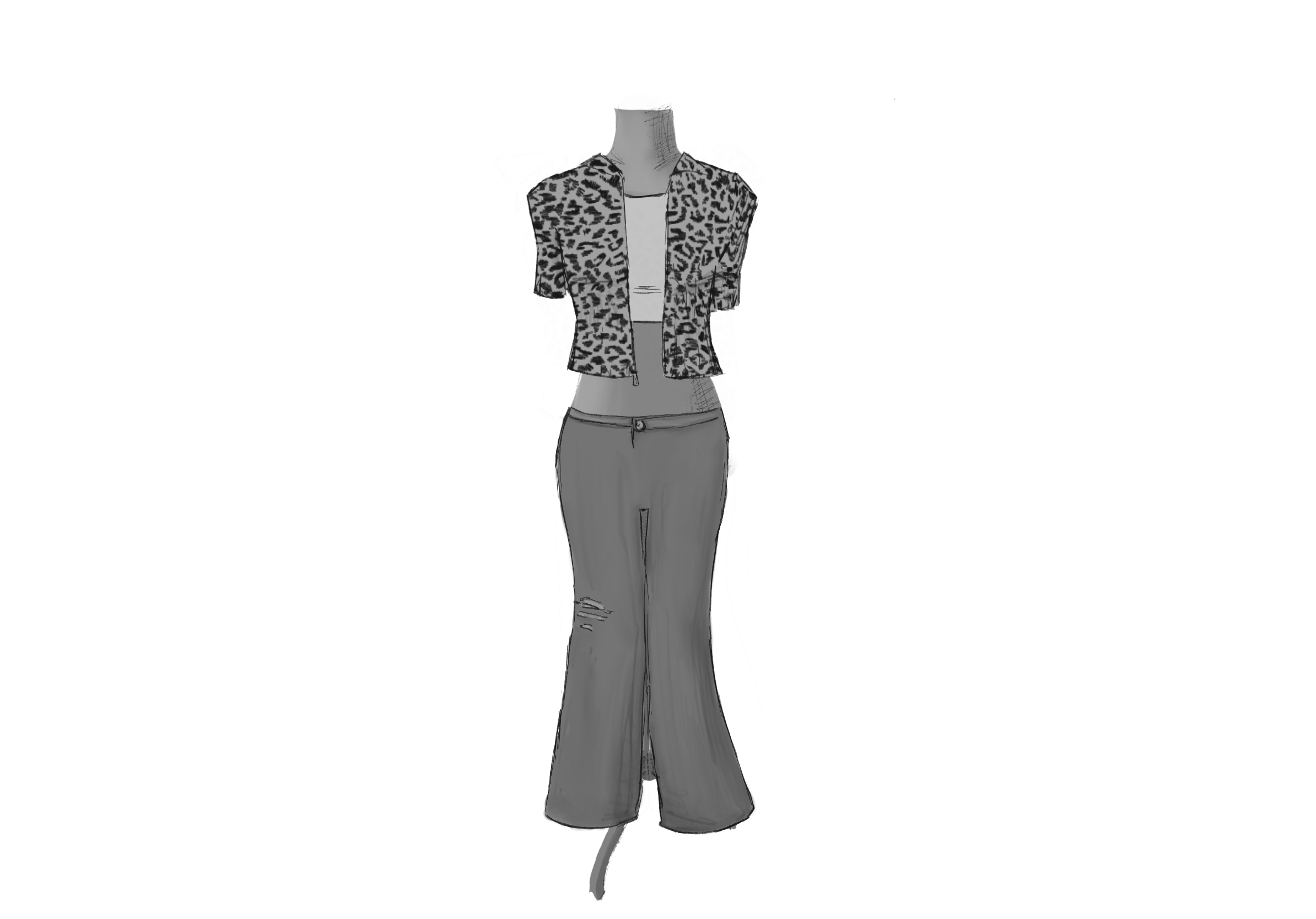What goes around comes around: a fashion commentary
November, 2024
Graphics: Charley Hu
Fashion trends today are constantly evolving and never stick around for long. And yet, it seems that the latest styles often cycle back to old favorites — jorts, chunky sneakers and bold animal prints, for example— which keeps history’s styles at the forefront of our minds. While this endless loop of reinvention makes fashion thrillingly unpredictable, it also leaves thousands of clothes discarded, primarily due to fast fashion, as closets adapt to these changing trends.
Popular clothing styles from past decades are slowly making their comeback into the lives of the new generation. Jorts became a trend during the 1960s counterculture movement as younger generations embraced the scandalous nature of cutting their jeans to above the knees. The lengths and styles of jorts have changed over the years: people in the 1970s and 1980s opted for shorter and tighter-fitting styles, while hip hop artists in the 1990s pushed for lower waistlines with longer and baggier pant legs.
Another item of clothing that grew in popularity in the 1990s were chunky sneakers, but they fell out of fashion later on shoes that were more sleek and minimalist replaced them. However, by the mid to late 2010s, chunky sneakers were brought back into the fashion realm after the “dad shoes” trend arose.
While these aesthetic comebacks are being widely accepted by the newer generations, rapidly changing fashion styles pose many issues. For one, what makes fast fashion “fast” is the poor quality of the clothing, which often results in garments becoming unwearable after only a few uses. This creates a cycle for the wearer: buy cheap clothes, wear them a few times, throw them out, buy more cheap clothes, wear them a few times, throw them out, etc. As trends shift shorter, consumers feel compelled to constantly replace items, perpetuating the loop and increasing environmental harm.
Moreover, the concept of “fast fashion” has become more widespread due to these fashion changes. Teenagers are often the target audience of fast fashion companies like Shein and Temu, as they’re drawn to buying large heaps of clothing at once due to the cheap prices. While there is a wave of excitement when one receives their Shein package, most are unaware or overlook the underlying issue of inadequately treated workers. According to Humanium, an organization focused on children’s rights, in Asian countries such as India and Bangladesh, many child laborers are overworked and underpaid to create clothing for fast-fashion brands following such trends. Unfortunately, the production of fast-fashion clothes also creates environmental problems due to the excessive use of water and the amount of plastic used within the garments.
The concept of fashion trends being cyclical isn’t inherently bad; the old is brought back as “new.” However, issues emerge when society is always looking for the next new thing to popularize, discarding clothes with the blink of an eye, as many of fast-fashion’s workers and the environment are left to shoulder the consequences of our temporary desires.